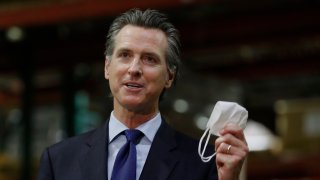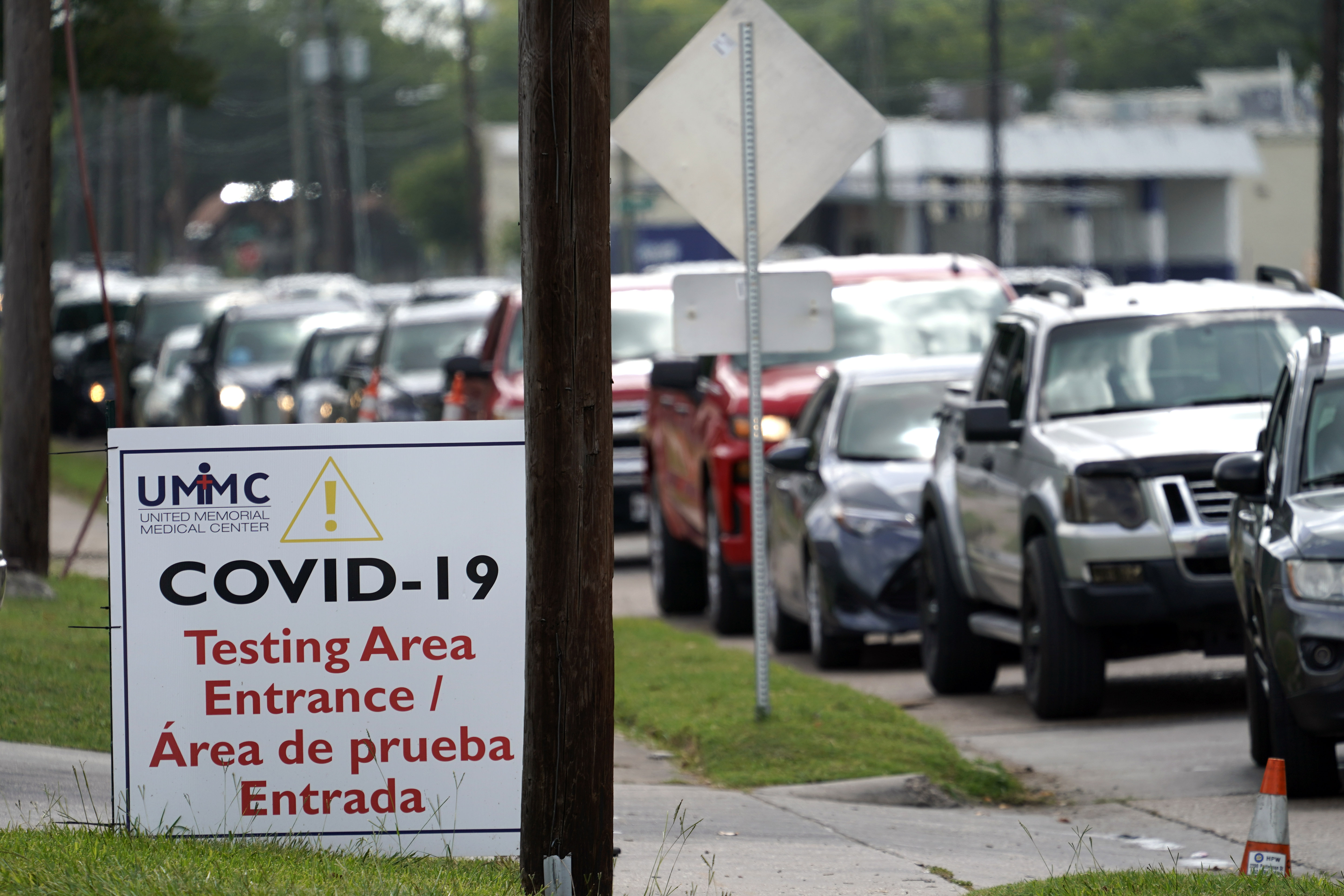
Surging coronavirus cases in California prompted a warning on Wednesday from the nation’s most populous county of a possible delay to classroom instruction in public schools next month -- a setback Gov. Gavin Newsom said he hopes to avoid by convincing more people to wear face coverings and stay away from gatherings.
Los Angeles County public health officials say, on average, more than 10% of people tested for the virus end up having it, a rate not seen since late-April. Given the high number of cases, Los Angeles County Public Health Director Barbara Ferrer said local school officials should prepare for delaying a return classroom instruction.
“With the uncertainty that we face right now in our county, everyone needs to have sort of a plan b around the reopening,” she said. “You absolutely would not want to open a sector when you thought the result of reopening could be an explosion of outbreaks within that sector.”
President Donald Trump weighed in on Wednesday, threatening to withhold federal money from school districts if they don’t open their doors for the new school year in the fall.
Gov. Gavin Newsom dismissed that threat, saying school districts will decide for themselves whether it is safe to open. But he said those decisions will be based on whether people can slow the spread of the virus by changing their behavior.
“I would like to think that we have the capacity to make better decisions in the next few weeks where we don’t have to make the decision to delay the school year,” said Newsom, the father of four young children who has echoed other parents’ frustration at having to manage schooling at home during the pandemic.
School districts across the state have been grappling with how to safely reopen in the fall. Some districts are offering multiple options, with parents choosing between in-person instruction or continuing with virtual learning at home -- or a combination of the two.
San Francisco health officials on Wednesday issued guidelines on how to safely reopen city schools that include requiring all K-12 students to wear masks and for older children to stay six feet apart. They recommend staggered times for arrival, recess, lunch and dismissal for middle and high school students. Plus, they say schools should ban choir and playing the trumpet, clarinet or any other instrument that spreads droplets of saliva, plus any sport where students can’t stay at least 6 feet (1.8 meters) apart.
“We know that for our very youngest children, physical distance for the entire day is very tough, not practical for social-emotional learning and just very difficult to enforce,” said Jeanne Lee, medical director for the San Francisco Department of Public Health.
Figuring out how to open schools will be a big piece of restarting California’s economy. After shutting down many of the state in March to slow the spread of the disease, Newsom moved quickly to allow businesses to reopen in the spring once coronavirus cases stabilized. But since then, the state has seen an explosion of new cases that have led to a 44% increase in coronavirus related hospitalizations over the past two weeks.
Newsom has ordered people to wear face coverings in public places both indoors and outdoors. The state is closely monitoring new cases, placing counties on a watch list if their numbers are too high. Any county on the list for three consecutive days must shutter bars and close indoor operations at restaurants, movie theaters, wineries, zoos, museums, card rooms and family entertainment centers like bowling alleys, miniature golf and arcades.
The list already includes the largest counties in Southern California, and Wednesday the Newsom administration added three more counties to the list: Napa, San Benito and Yolo. Yuba and Sutter counties expect to be added to the list on Thursday, according to Bi-County Health Officer Dr. Ngoc-Phuong Luu.
On average, California is testing 106,000 people per day, up from the 2,000 per day average in April. The increase has led to shortages of equipment, forcing the closure of some testing sites and delaying the results for days.
Los Angeles County public health officials say all testing slots are booked for the rest of the week. Demand is so high in San Diego County it can take up to 10 days just to schedule a test. In San Bernardino County, public health officials have limited the number of tests because of supply shortages.
“There have been concerns about testing supply shortages throughout the state and within our county,” said Corwin Porter, San Bernardino County’s interim public health director.
The Ebb and Flow of New Coronavirus Cases and Deaths
The graphs below illustrate the distribution of new coronavirus cases and deaths in the U.S. While New York accounted for the lion’s share of new cases and deaths in March and April, its numbers have declined in May as some states have increased. Hover or tap to see new daily cases and deaths across the country. States with the most are ordered top to bottom.
Source: The COVID Tracking Project
Credit: Amy O’Kruk/NBC
Newsom said he was proud of how the state has bulked up its testing capacity. But he said he plans to announce new testing protocols in the coming days to make the state “much smarter” in how it tests people “in terms of who we are targeting” and “testing people on a more consistent basis so it’s not just about the numbers.”
For most people, the new coronavirus causes mild or moderate symptoms, such as fever and cough that clear up in two to three weeks. For some, especially older adults and people with existing health problems, it can cause more severe illness, including pneumonia, and death.
------
Associated Press reporters Olga Rodriguez in San Francisco and Brian Melley and John Antczak in Los Angeles contributed to this report.



